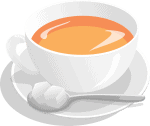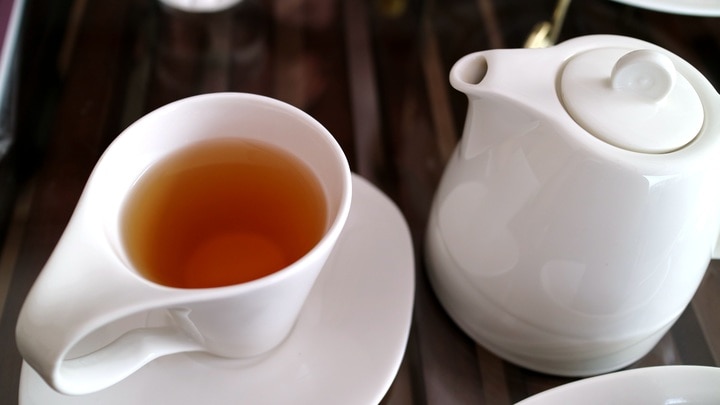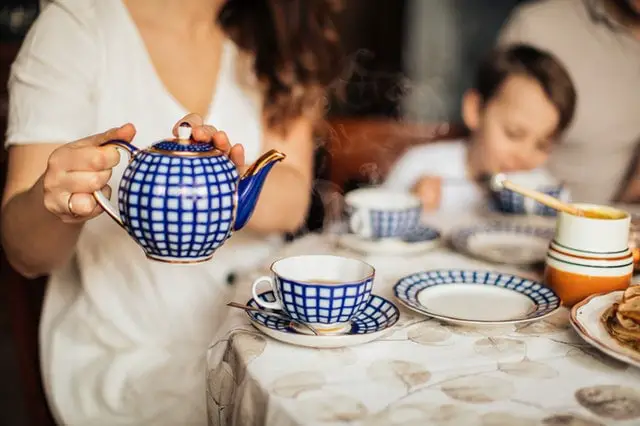Oolong tea is certainly one of the more delicious true teas around. Nevertheless, it is still relatively unknown to most tea drinkers.
So, if you have been on the lookout for the best oolong tea, you may have had some trouble coming up with an answer.
Well, luckily for you, there’s no need for any more research. Our guide below will show you exactly what oolong tea you should choose depending on your budget and preferences.
We’ve also offered some information on how to select the best possible types as well.
So, let’s get started!
Our Picks
Oolong Tea – At a Glance
No thanks, take me to the Best Oolong Teas
Even if you do enjoy the taste of oolong tea, you may still be in the dark about some of the fundamentals of this drink.
If this is the case, here is a brief introduction to oolong tea.
Types of Oolong Tea
To begin with, let’s take a look at the different types of oolong tea. The categorizations are often based on the growing region of this blend:
Fujian Province (China)
- Dà Hóng Páo
- Shuǐ Jīn Guī
- Tiě Luó Hàn
- Bái Jī Guān
- Ròu Guì
- Shuǐ Xiān
- Tiě Guān Yīn
Guangdong Province (China)
Taiwan
- Dòng Dǐng
- Dong Fang Mei Ren
- Alishan
- Pouchong
- Jin Xuan (Milk Oolong)
Related Article
So Long Extra Pounds! Here’s the Best Oolong Tea for Weight Loss
The Flavor Profile
Now, there is a good chance that you haven’t tried all the oolong teas on the market. So, if you are considering selecting one for yourself, it is important to understand the flavor variations.
In essence, the flavors of the oolong tea depend on the level of oxidation and the exact processing technique.
Typically, a tea that has been oxidized between 8 and 85 percent is considered an oolong tea.
Thus, here is some insight into how the differently processed oolong teas will taste:
“Green” Oolong
At first glance, this oolong tea can look a lot like green tea. However, it is the tightly rolled balls that give the game away.
While they have a similar fresh and vegetal taste as the green teas, there is more depth to the oolong tea. As such, there is a more floral and buttery flavor to it.
Medium Oxidized/Roast Oolong
As these leaves are more oxidized, they have a deeper flavor. You may get hints of warm spices, honey, white sesame, or toasted grain.
Heavily Roasted Oolong
These teas are more dark and intense, a bit like coffee in certain ways. Depending on where they are grown, they can boast chocolate or nutty flavors or something more fruity and floral.
How to Select Oolong Tea
Now, let’s move onto how you can select oolong tea. Some of the things to watch out for include:
Similar Shape and Size Balls
As you may have noticed loose leaf oolong tea is rolled into small balls. This allows for the trapping (and release) of more nuanced flavors.
The best oolong teas are hand-rolled. As such, they will be in similar shape and size to one another. This is something that you can look for when selecting your teas.
Uniform Color
Look for leaves that have a uniform color. For instance, if you are opting for a light green oolong, steer clear of any teas that have other color pigments in them.
These discolored portions often indicate that the leaves weren’t picked at the right time or that they were incorrectly processed.
Fragrance and Aroma
All fresh teas need to give off a gentle aroma. This tells you that once the leaves are brewed, they will release a similarly delicious flavor.
However, the fragrance should be subtle. If it appears to be too strong it could contain artificial flavors and this can impact the overall authenticity of the tea.
A Good Brand
If all this sounds a little too technical for you, there is a fail-safe way to select top-notch oolong teas. You can do this by sticking with brands that are well-known for their high-quality teas.
And, on this note…
The Best Oolong Tea Brands
Let’s take a look at the best tasting oolong teas that different brands have to offer:
Loose Teas
To begin with, let’s check out the brands that offer the best loose oolong teas.
Luxury Pick
What We Like:
- Well-Sourced Leaves: the leaves are from the high ground in the Fujian mountains in China. As such, they are some of the best that the industry has to offer and provide an authentic flavor.
- Hand-Processed: the leaves have been delicately hand-processed, ensuring that the leaves have been oxidized and rolled to perfection. This process has also preserved the full-bodied flavor.
- Sweet and Creamy Flavor: this is a truly delicious tea with notes of sweet cream and pineapple coming through with every sip. It is great for anyone with a sweet tooth.
What We Don’t Like:
- Can Be an Acquired Taste: the pineapple notes can take a while for some oolong lovers to get used to.
Value Pick
What We Like:
- Pleasant Flavor: this tea has a bright and subtle flavor. Thus, if you have never tried oolong teas before, this is a good introduction point.
- Maintained Freshness: the leaves have maintained their freshness beautifully, ensuring that each cup of tea is as tasty as the last.
- Easy to Brew: the tea is quite simple to brew and offers up a consistent strength and flavor. It also works quite well as an iced tea.
What We Don’t Like:
- Flavor Can Be Too Mild: if you have more experience with oolong teas, this flavor can come across as being too mild.
Our Pick
What We Like:
- Well-Grown: the leaves are sourced from the Anxi province which is home to numerous other high-quality teas. This ensures that you are drinking a well-known oolong type.
- Traditionally Processed: from hand-rolled to roasting, this brand has followed more traditional techniques to process the leaves. The resulting flavor is richer and more authentic as well.
- Dark But Enjoyable Flavor: the flavor with this brew is quite dark, although there is a pleasant grainy aftertaste.
What We Don’t Like:
- Strong Earthy Notes: the earthiness of this tea can be overwhelming for some.
Tea Bags
Now, let’s move onto the brands that offer the best oolong tea bags.
Luxury Pick
What We Like:
- Similar to Loose Tea: as far as quality goes, this is as close as you can get to loose-leaf oolong tea. Of course, this version is a lot easier to brew.
- Fresh and Fragrant Taste: this has a gentle floral taste with just a hint of something darker that lingers on your tongue.
- Natural Tea Bags: the tea bags are all-natural and unbleached, making them a lot safer for you to use.
What We Don’t Like:
- Need to Double Up on Tea Bags: for a stronger brew, you will need to use two bags. Otherwise, the flavor will be quite mild.
Value Pick
BIGELOW OOLONG TEA BAGS
If you want a stronger oolong that won’t break the bank, Bigelow’s is the brand to turn to.
What We Like:
- Strong Brew: the brew is pleasantly strong although it has a nice, mellow flavor as well. This is impressive for leaves with an unspecified source.
- Maintains Freshness: each tea bag has been packaged so that the freshness is maintained. This makes for a much tastier cup.
- Consistent Quality: the brand offers up consistent quality, ensuring that your cup of oolong tea tastes the same every time.
What We Don’t Like:
- Lacks Sweetness: most oolongs have a slight sweetness but this particular type lacks it.
Our Pick
What We Like:
- Authentic Source: the tea leaves come from the Fujian province, offering you a high-quality, well-grown tea.
- Interesting Flavor: the tea has a warm and toasty, almost savory flavor. There are also subtle hints of citrus in there as well.
- Steeps Well: it is quite easy to brew this tea to the perfect strength and it produces a beautiful golden drink.
What We Don’t Like:
- Taste Variance: the citrus notes in the tea can be off-putting to those who prefer a more familiar taste.
Organic Teas
Finally, here are the best organic oolong teas on the market.
Luxury Pick
GOLDEN MOON OOLONG TEA
If you are looking for something creamy yet light, this organic oolong will serve you well.
What We Like:
- Buttery Flavor: the buttery flavor adds a certain creaminess to every cup. At the same time, the flavor is quite light and isn’t overwhelming.
- Ultra-Fresh: the leaves have been picked at a specific time to maintain freshness. What’s more, the oils have been preserved so that every cup tastes nice and fresh.
- Thoroughly Tested: the company independently tests the teas to make certain that they are free of any pesticides or toxic substances.
What We Don’t Like:
- Lacks True Authentic Taste: this doesn’t taste exactly like Tie Guan Yin Wulong tea.
Value Pick
What We Like:
- Decent Quality Tea: the quality of this tea is quite good. While it isn’t necessarily top shelf, you won’t be disappointed by it either.
- Great for Regular Use: the good quality combined with the affordable price means that this is an organic tea that you can enjoy regularly.
- Brews Well: the leaves unfurl quite well, allowing them to release the full extent of their flavor.
What We Don’t Like:
- Lacks Delicate Notes: there are no subtle or complex notes that can be typically found in higher quality teas.
Our Pick
What We Like:
- Great Flavor: this is a delicious tea. You get to enjoy a smooth body with just the right amount of sweetness. It will delight experts and amateurs alike.
- Well-Rolled: the leaves have been well-rolled ensuring that they fully release their flavor when steeped in water.
- Fresh: the teas are kept quite fresh, ensuring that you get a sprightlier cup of tea.
What We Don’t Like:
- Has to Be Brewed Perfectly: if you want to enjoy all the flavors that this tea has to offer, then you have to brew it just right.
If you want to pick the best oolong tea, this guide is for you. On top of our recommendations, you can also learn some valuable information on how to pick a tea to suit your tastes.



